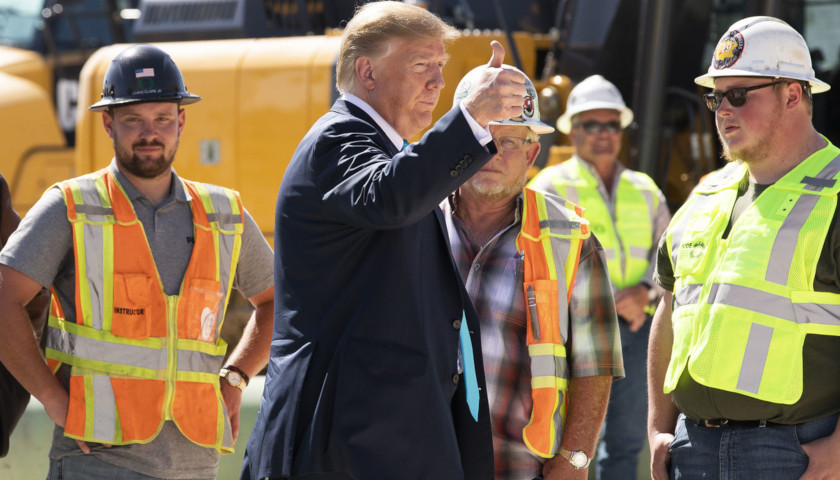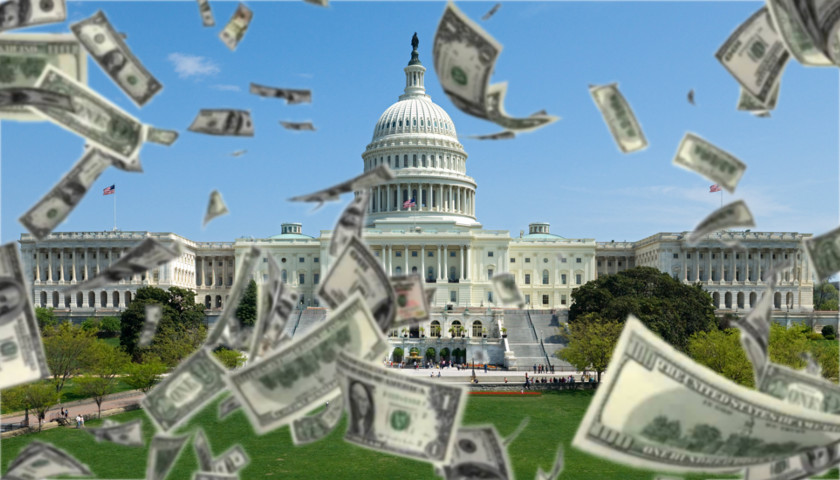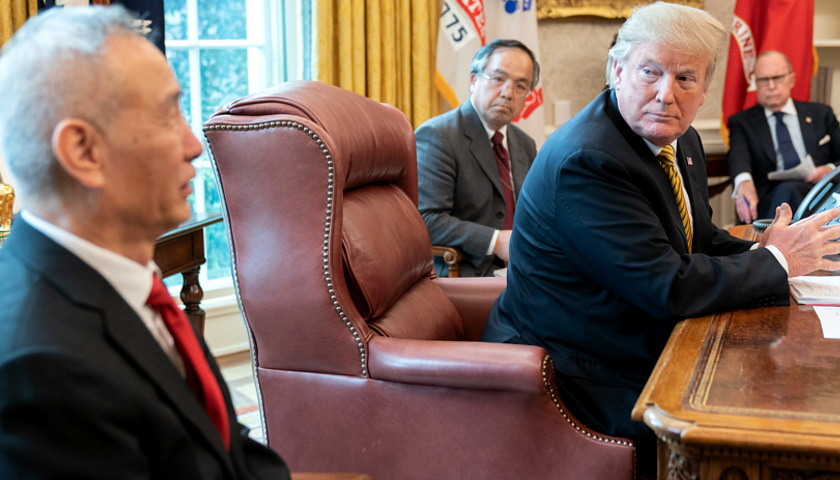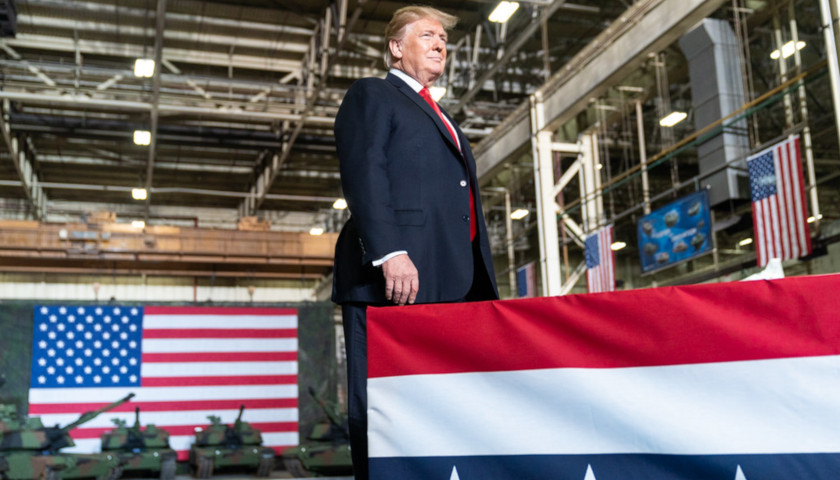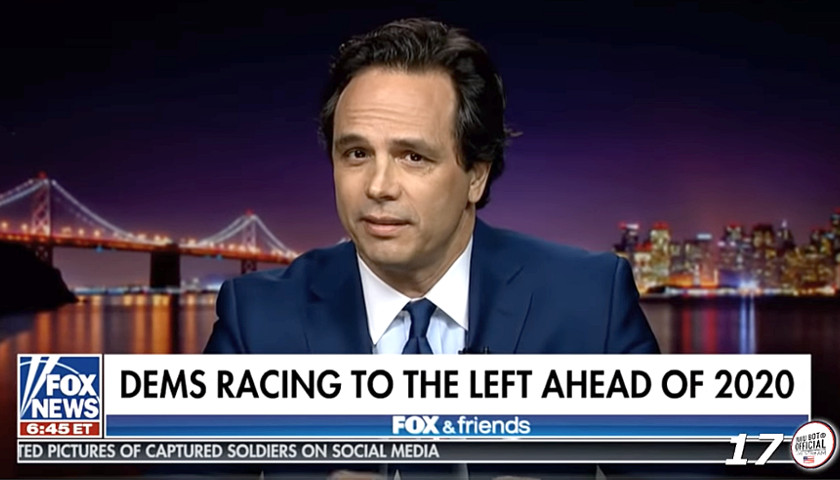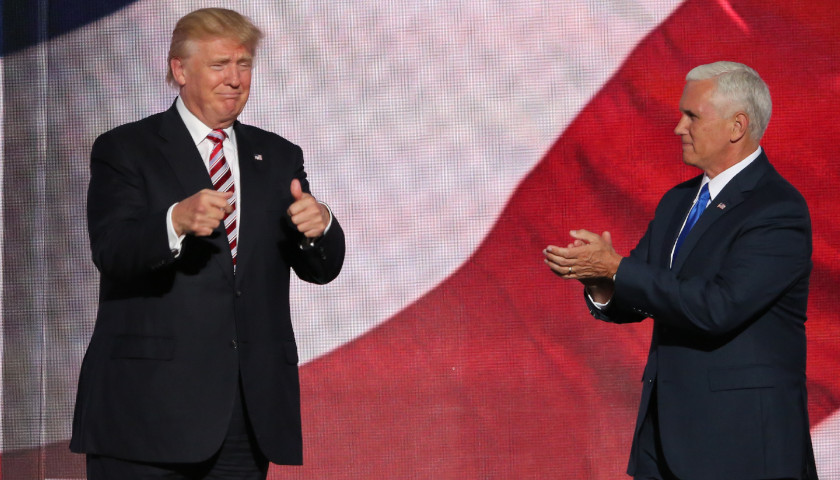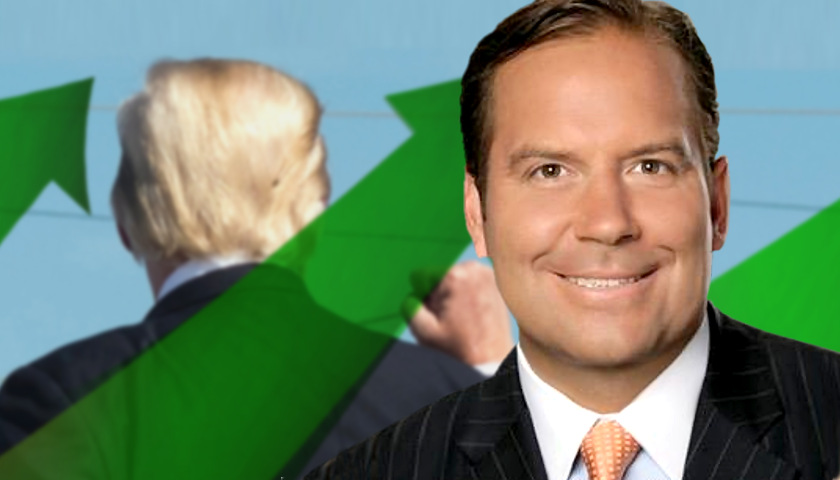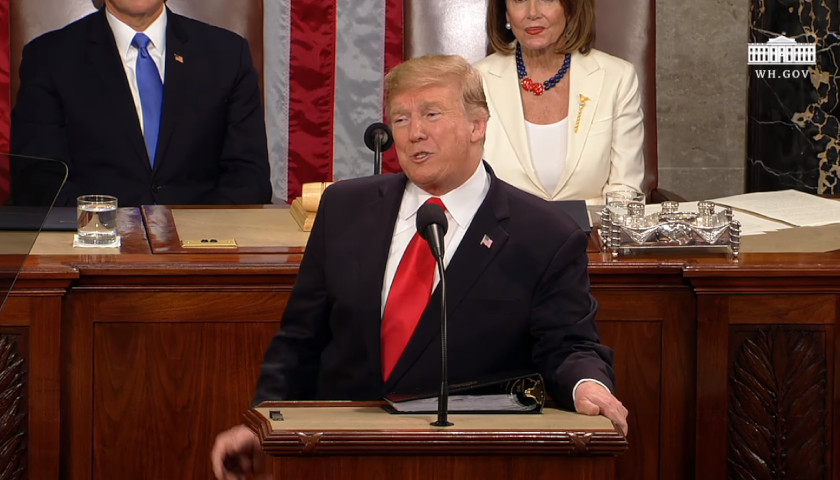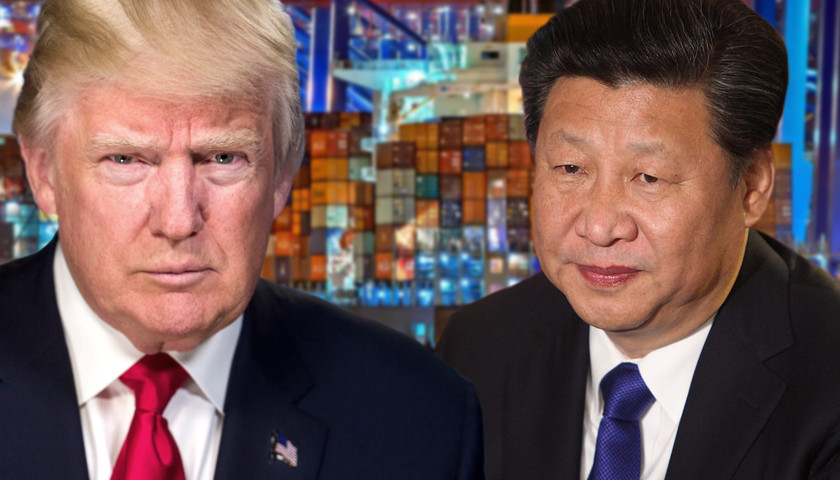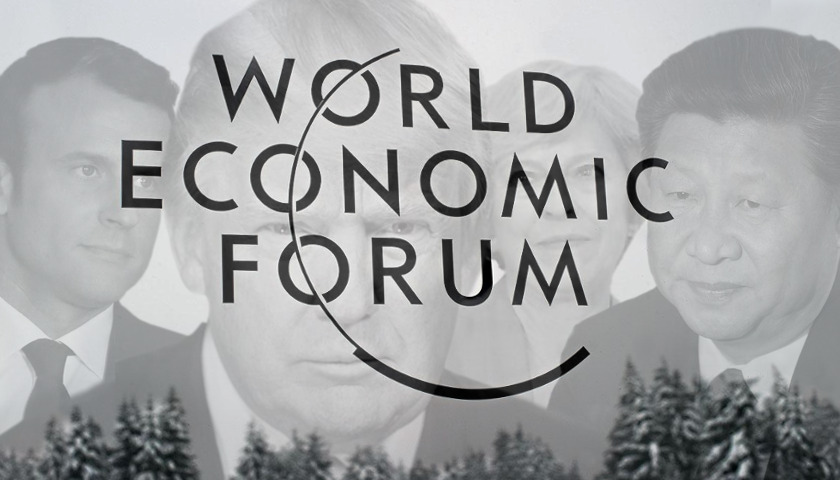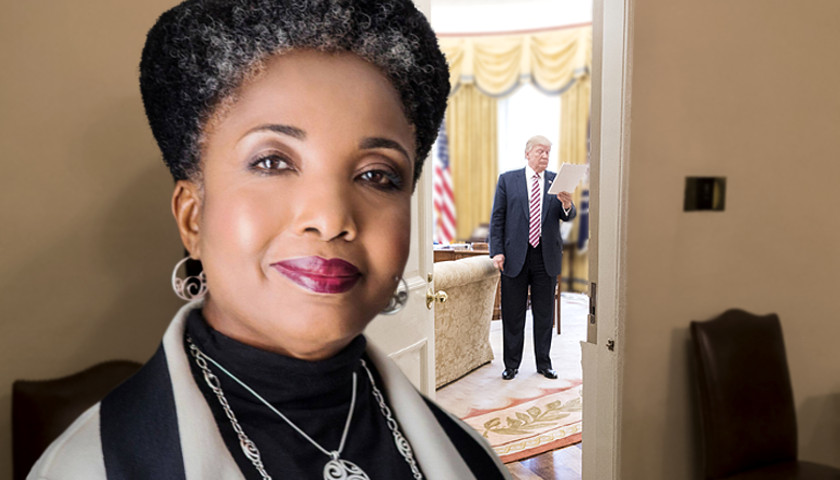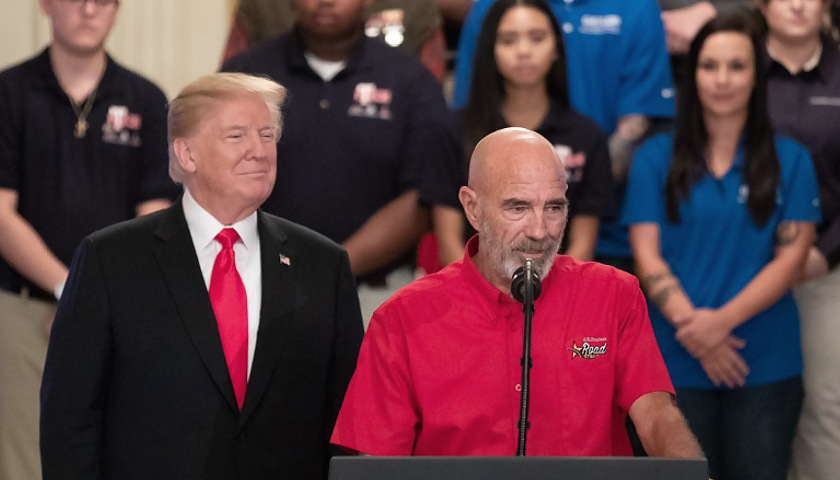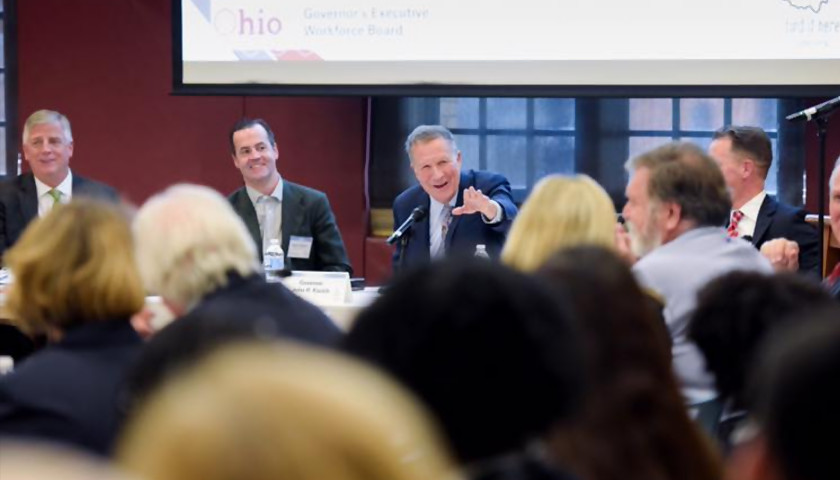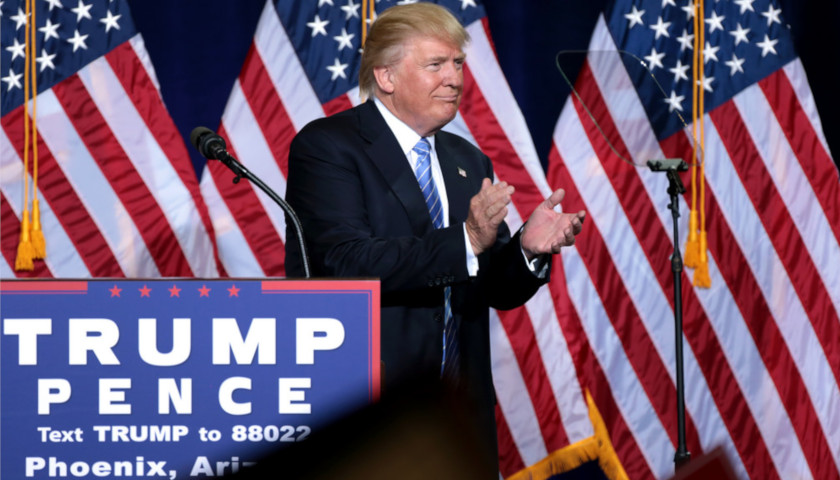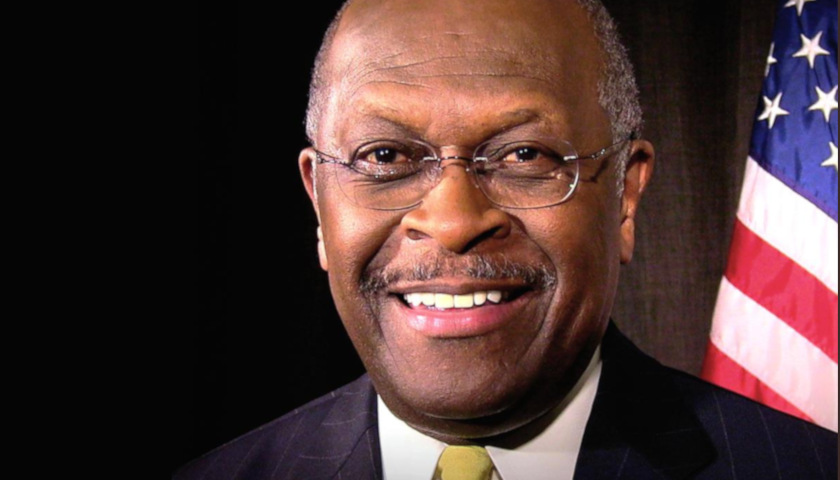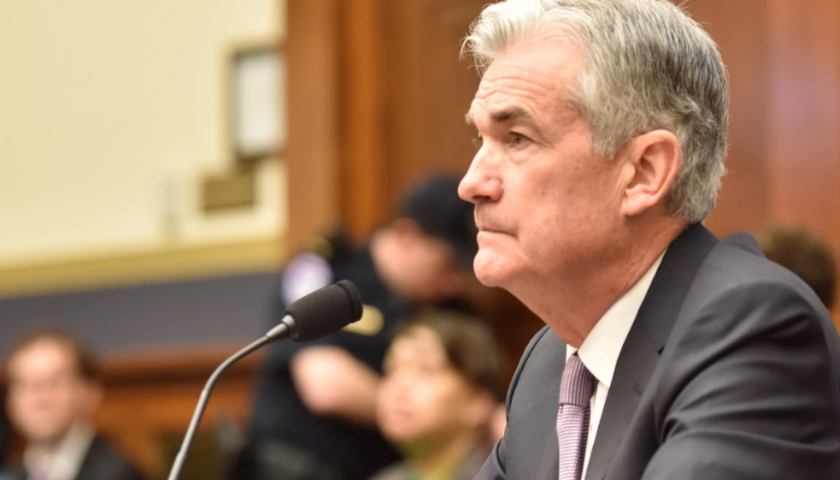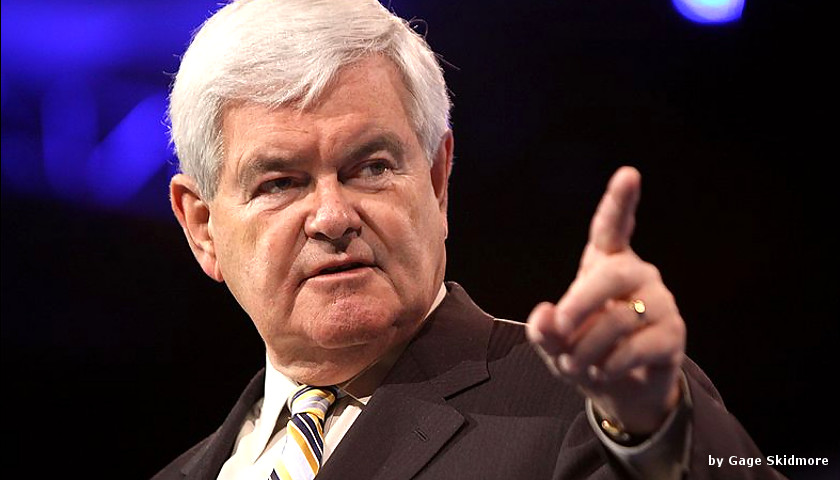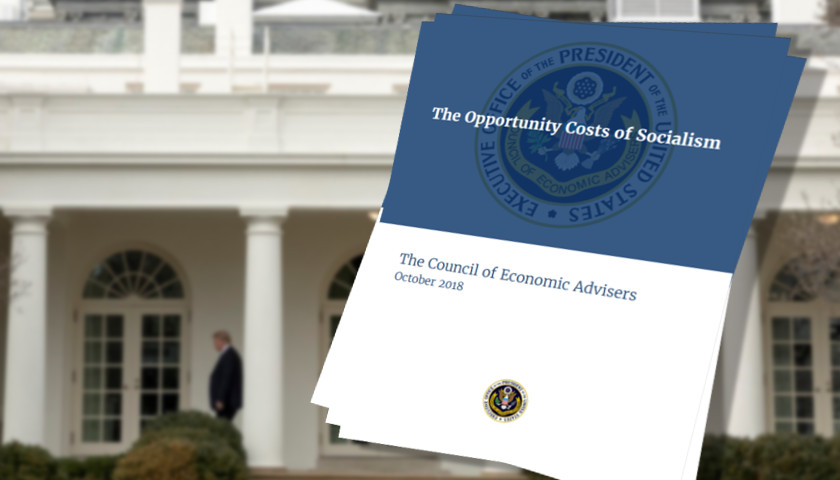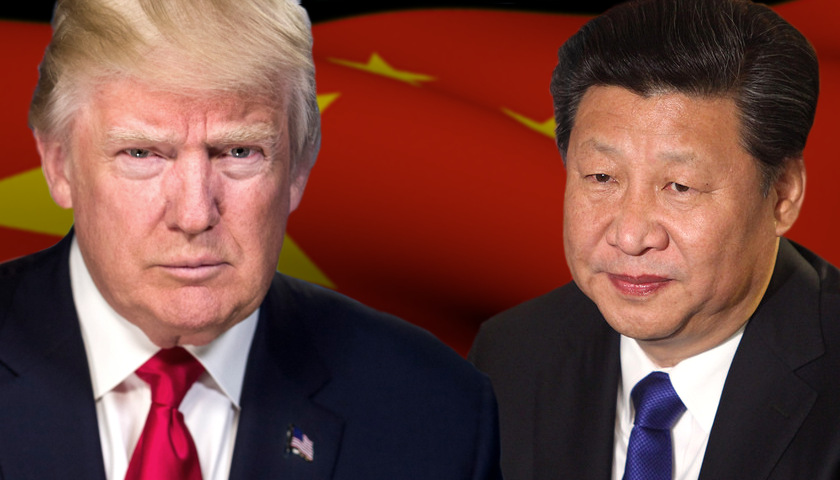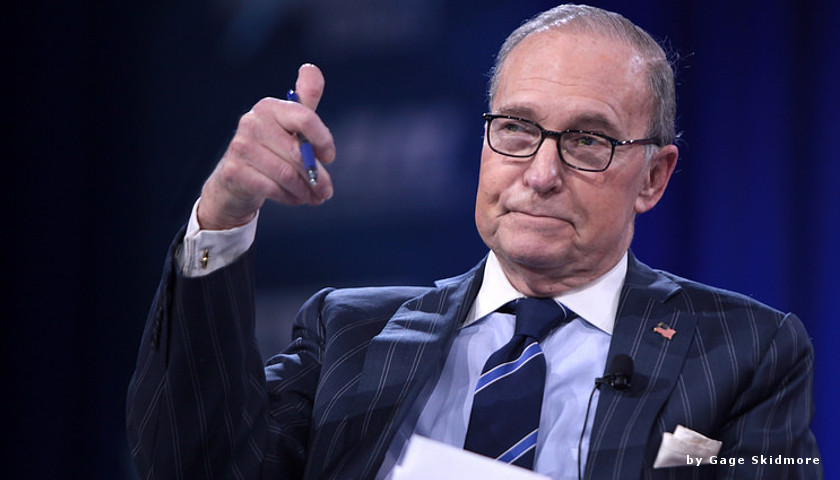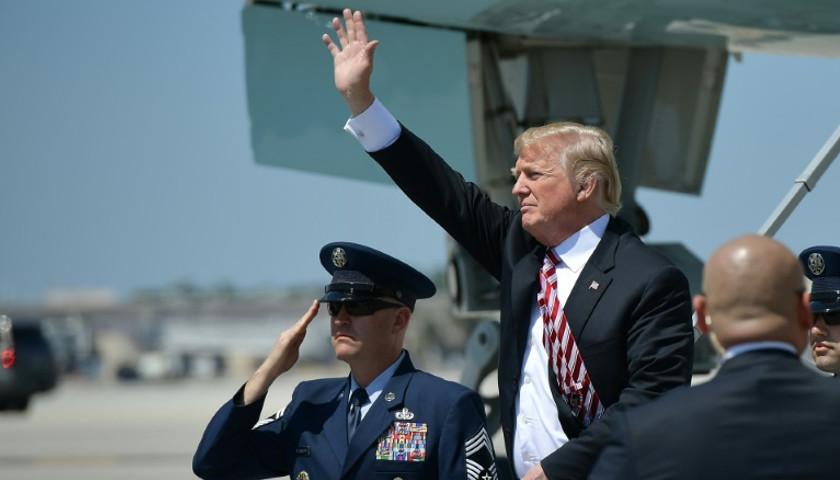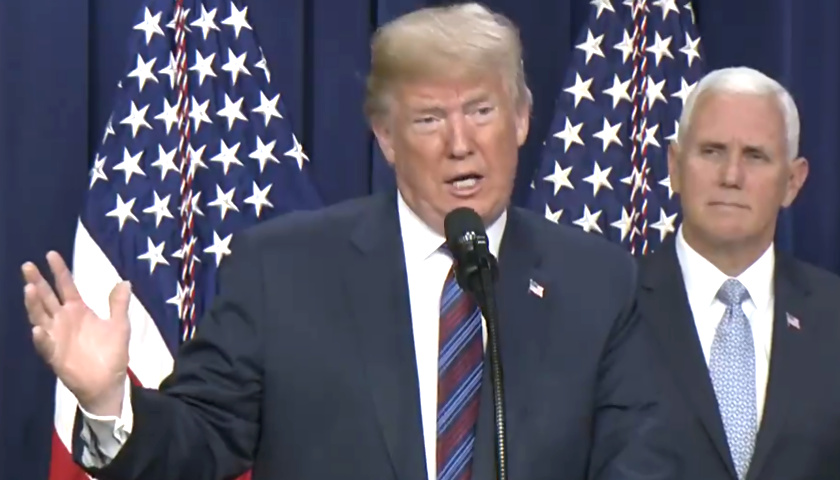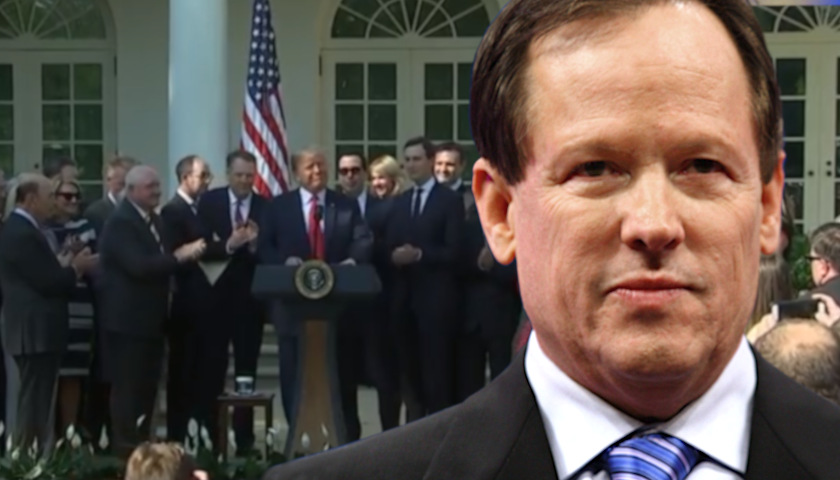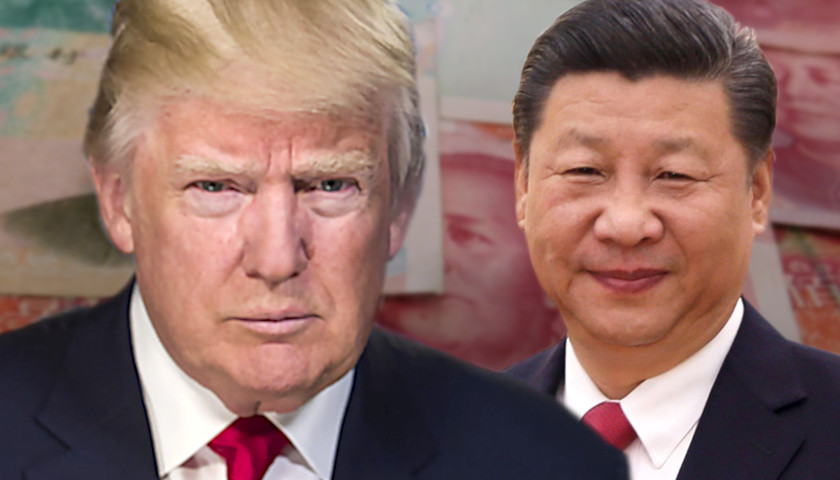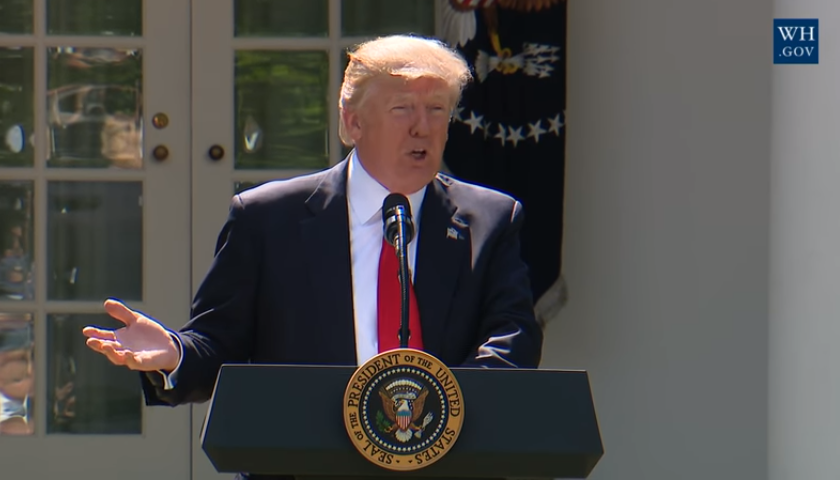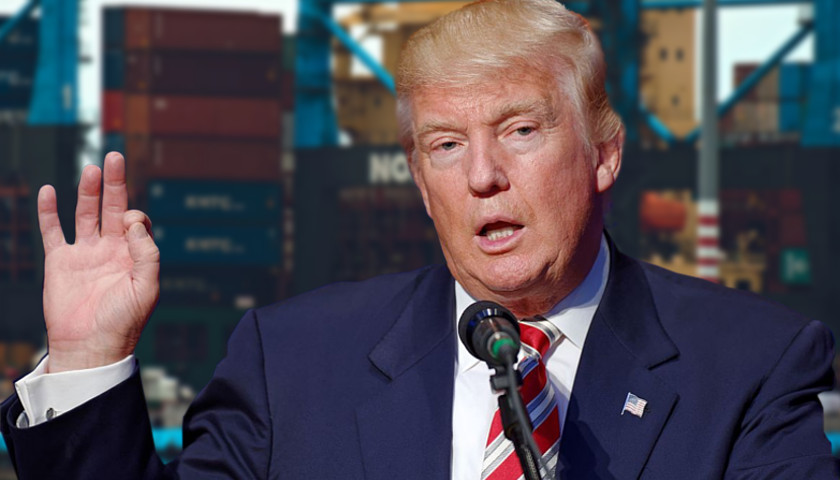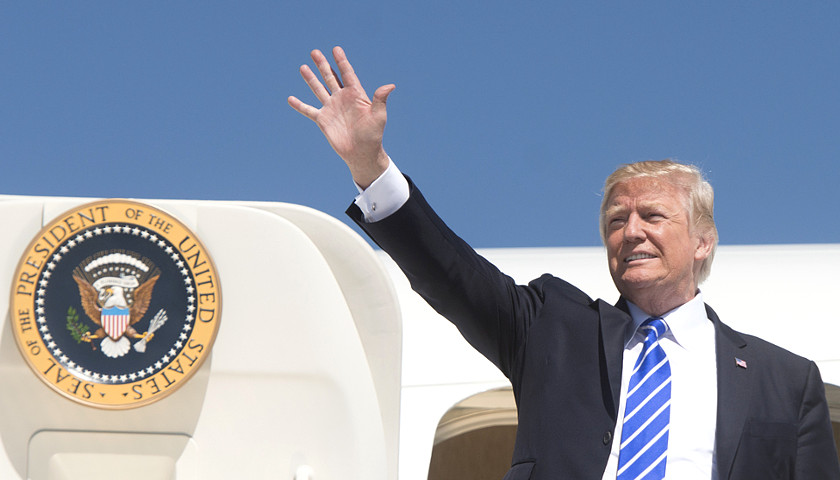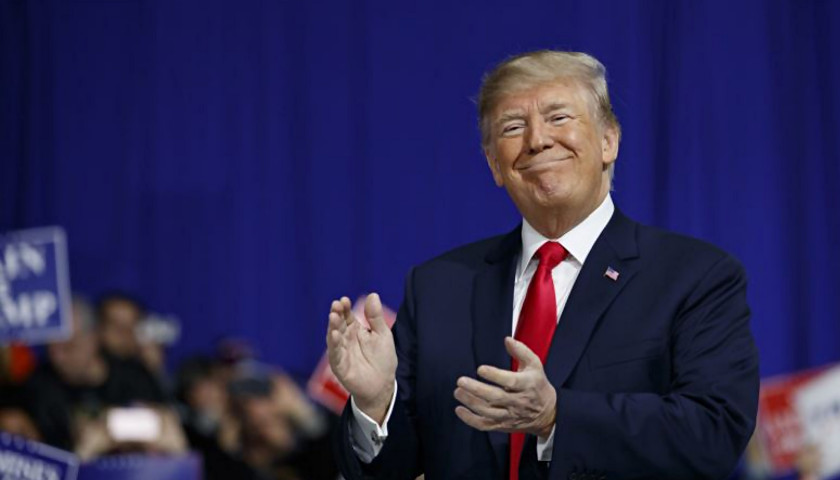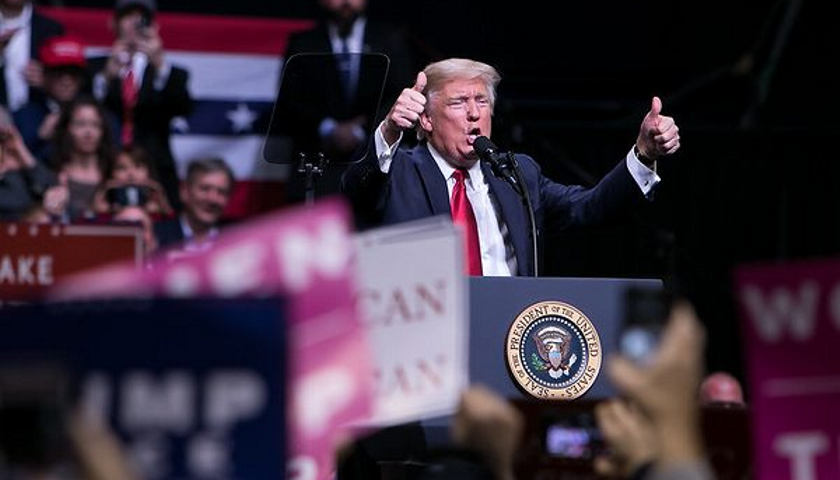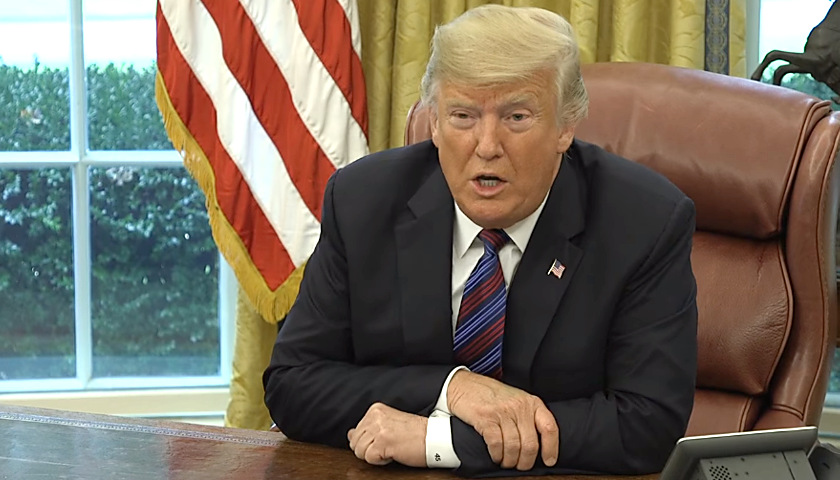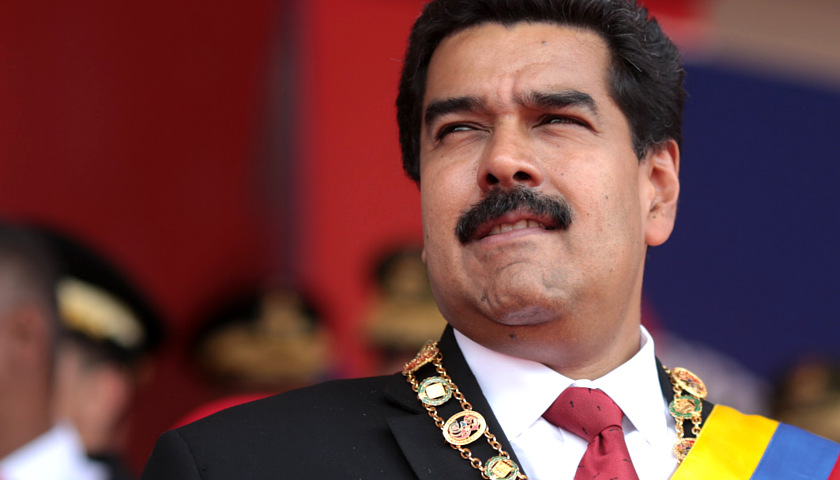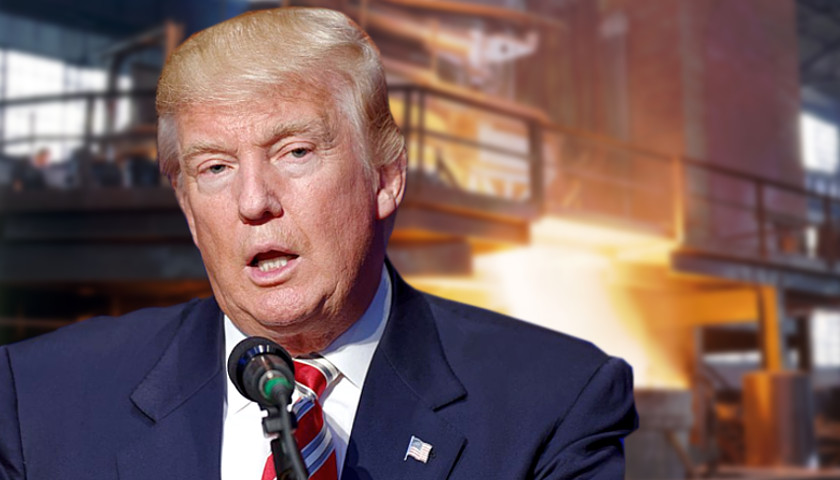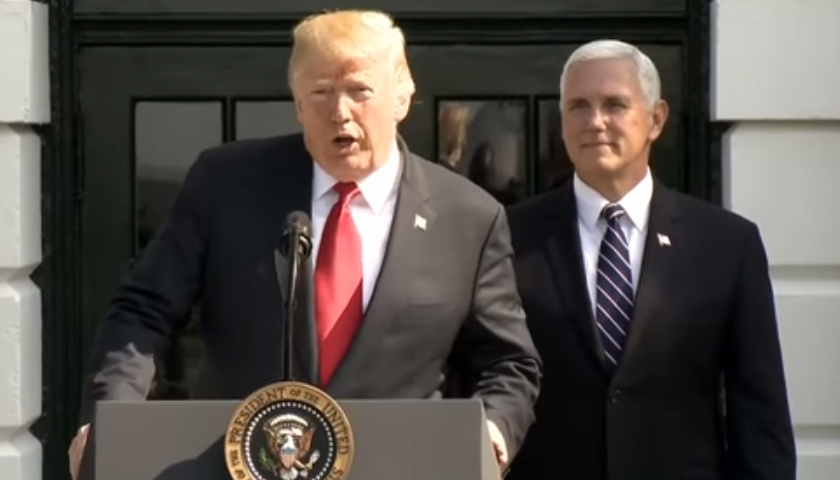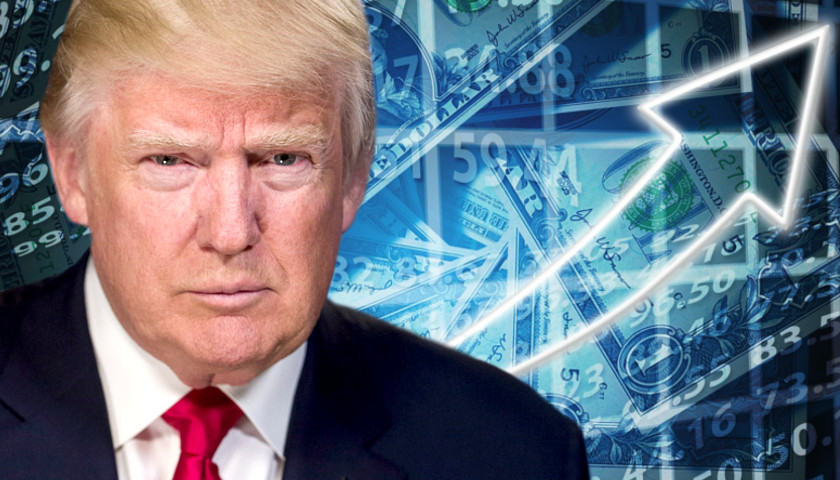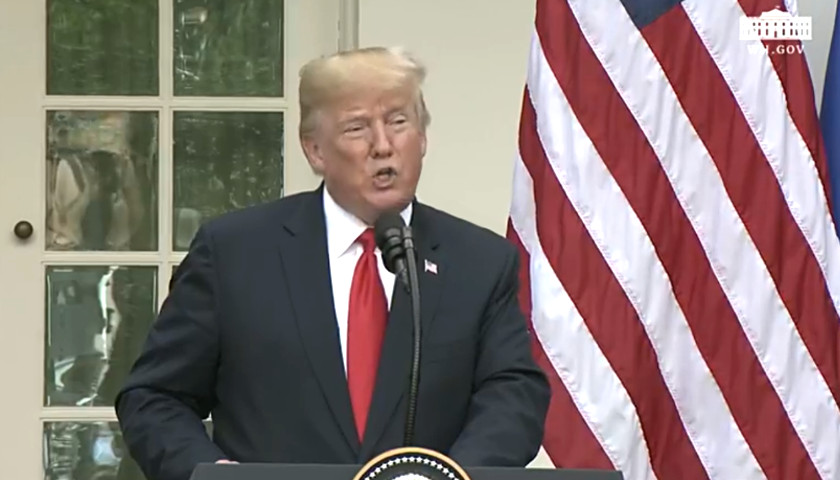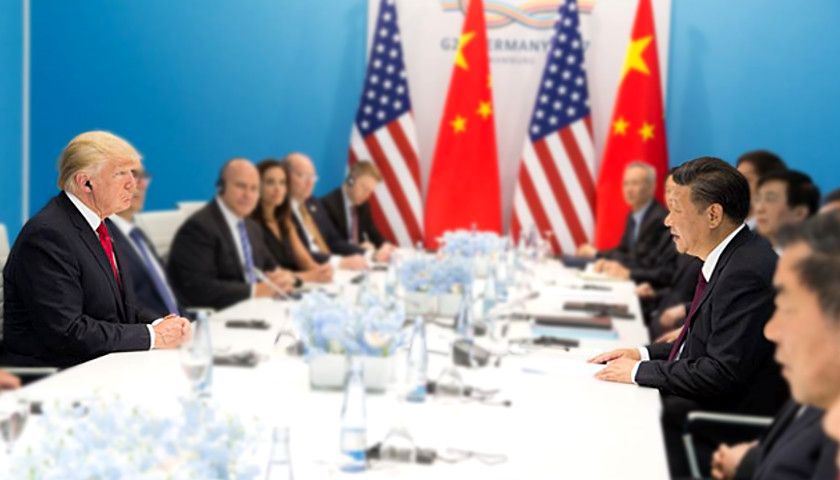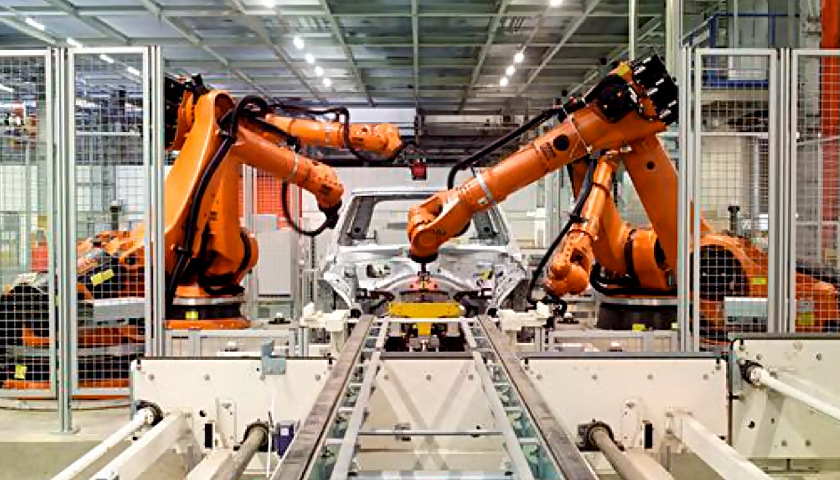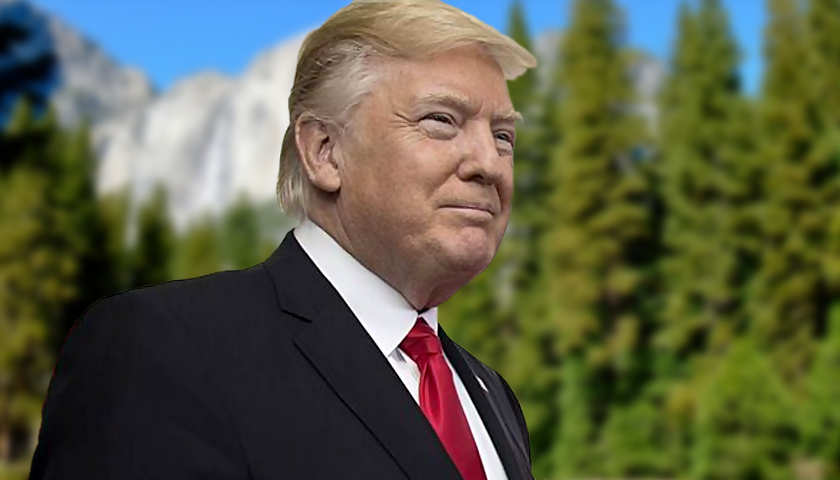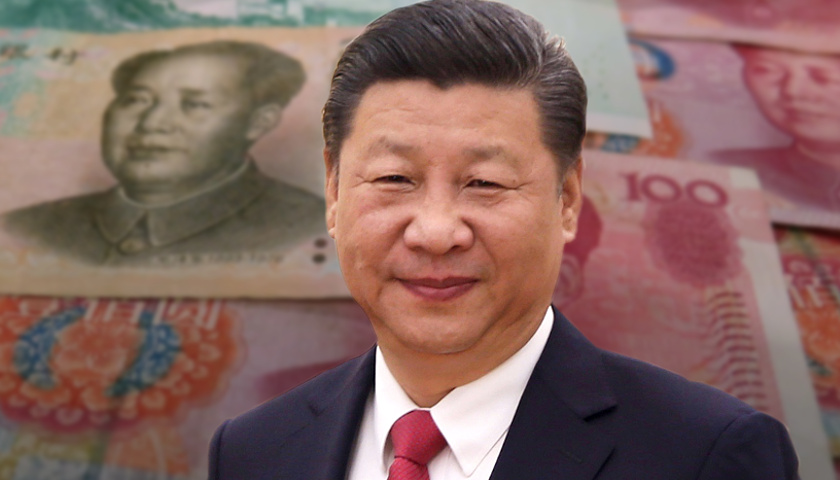U.S. employers added a robust 263,000 jobs in April, suggesting that businesses have shrugged off earlier concerns that the economy might slow this year and anticipate strong customer demand. The unemployment rate fell to a five-decade low of 3.6% from 3.8%, though that drop partly reflected an increase in the number of Americans who stopped looking for work. Average hourly pay rose 3.2% from 12 months earlier, a healthy increase though unchanged from the previous month. Friday’s jobs report from the Labor Department showed that solid economic growth is still encouraging strong hiring nearly a decade into the economy’s recovery from the Great Recession. The economic expansion is set to become the longest in history in July. Many businesses say they are struggling to find workers. Some have taken a range of steps to fill jobs, including training more entry-level workers, loosening educational requirements and raising pay. The brightening picture represents a sharp improvement from the start of the year. At the time, the government was enduring a partial shutdown, the stock market had plunged, trade tensions between the United States and China were flaring and the Federal Reserve had just raised short-term interest rates in December for a…
Read the full storyTag: economy
Lawmakers Eye a Huge Backdoor Spending Increase
by David Ditch Members of Congress are promoting the concept of changing three programs from the discretionary category (requiring annual appropriations) into mandatory (auto-pilot) spending. Such changes would become a huge backdoor spending increase. Spending limits have come under relentless attack from both parties. In 2013, 2015, and 2018, Congress passed massive spending increases with little to no effort to find pay-fors. With just two years remaining for the Budget Control Act’s modest restraints, there is tacit agreement that Congress will likely make yet another deal to add to the nation’s $22 trillion debt. If that was not bad enough, there is a long, bipartisan tradition of finding shortcuts around already-inflated spending limits. Appropriators have repeatedly used fake savings to squeeze more spending inside the caps. Disaster and war funding exceptions have been abused to the tune of hundreds of billions of dollars. Congress has accepted flagrant violations of budget rules with minimal resistance. Another tactic for avoiding budget discipline is to re-categorize existing programs. While discretionary spending is subject to limits and annual deliberation, so-called mandatory spending is typically left to grow unchecked. The liberal Left continue to push their radical agenda against American values. The good news is there is a solution. Find out more >> Mandatory spending—which…
Read the full storyDespite Further Talks, No US-China Deal Yet
President Trump and the vice premier of China confirmed on Thursday that while significant progress has been made, there is no new trade agreement yet between the world’s two largest economies. “We’re certainly getting a lot closer,” Trump said sitting at his desk in the Oval Office with Chinese Vice Premier Liu He alongside him. Announcement of a deal could come in “the next four weeks, maybe less, maybe more” and at that time, something “monumental could be announced,” he said, adding, “We are rounding the turn. We’ve made a lot of progress.” Liu, speaking in English, praised the direct guidance of Trump and Chinese President Xi Jinping, adding: “Hopefully, we’ll get a good result.” Trump said if a deal can be reached, then he will hold a summit with Xi. “If we have a deal, there will be a summit,” he said. “I look forward to seeing President Xi. It’ll be here.” Intellectual property protection, as well as certain tariffs remain under discussion, Trump confirmed. “Some of the toughest things have been agreed to,” he added. Asked to make a comment by the president about the status of the negotiations, U.S. Trade Representative Robert Lighthizer was more cautious, replying,…
Read the full storyHiring Rebounds as US Employers Add a Solid 196,000 Jobs
Hiring in the United States rebounded in March as U.S. employers added a solid 196,000 jobs, up sharply from February’s scant gain and evidence that many businesses still want to hire despite signs that the economy is slowing. The unemployment rate remained at 3.8 percent, near the lowest level in almost 50 years, the Labor Department reported Friday. Wage growth slowed a bit in March, with average hourly pay increasing 3.2 percent from a year earlier. That was down from February’s year-over-year gain of 3.4 percent, which was the best in a decade. The employment figures reported Friday by the government suggest that February’s anemic job growth — revised to 33,000, from an initial 20,000 — was merely a temporary blip and that businesses are confident the economy remains on a firm footing. Even with the current expansion nearly 10 years old, the U.S. economy is demonstrating its resilience. At the same time, the economy is facing several challenges, from cautious consumers to slower growth in business investment to a U.S.-China trade war that is contributing to a weakening global economy. Stock futures rallied after Friday’s jobs data was released at 8:30 a.m. and bond prices rose as well, with…
Read the full storyFormer California GOP Chairman Lists Nine Ways America Is Moving Towards Socialism
by Nick Givas Former California GOP Chairman Tom Del Beccaro listed nine ways in which America is moving towards socialism during an appearance on “Fox & Friends” Monday. Del Beccaro said increased government spending and inflated tax codes are just the beginning and claimed they’ll have a domino effect on the rest of the country. “We do have massive [spending],” he said. “We are going to spend $7.6 trillion as a society in this upcoming year which is roughly four times what Reagan’s era spent when he said government was the problem.” “We have massive tax systems,” Del Beccaro continued. “And hallmarks of socialist societies are poor incentives where there is weak economic growth. And that comes from tax systems. Trump did a good job beginning with the business tax code. He’s got to do better with personal so we have better growth.” He then moved to reduced economic growth through government interference and cited the EU as a prime example. “[The EU] had zero economic growth over the last 20 years and government is about 60, 70 percent of their economies,” Del Beccaro said. “In the United States we’re about 36 [percent]. With regulations closer to 50. Our growth has slipped…
Read the full storyReport: Ohio Job Growth Strong in 2018
Friday, Ohio’s private economic development corporation, JobsOhio, released their annual report for 2018. The report assessed current projects, jobs created, jobs maintained, and lastly, capital investments. By these metrics, 2018 appeared to be a strong year for Ohio. However, there are qualifiers to their findings. Overall, by JobsOhio assessment, the organization was involved in 266 projects across Ohio. This is actually a small decrease from previous years. In 2016, the organization was involved in 284 projects and 272 in 2017. However, the payroll and jobs created from these projects are significantly higher. The total payroll for 2018 $1.3 Billion with 27,071 new jobs created. Both of these figures represent significant jumps. While the report does not list the number of jobs lost or why the number of projects decreased, it does list the number of jobs retained. In total, 69,905 were retained in 2018, for a total payroll value of $4.2 Billion. Capital investment remained constant with last year at $9.6 Billion. It should be noted that the job numbers for 2018 reflect future jobs and spending commitments which means that, when the projects are launched, the actual numbers could vary significantly. According to the report, the majority of these new jobs were made in…
Read the full storyAt 2.9 Percent, 2018 Was the Strongest Economy Since 2005 on Growth and Jobs
by Robert Romano President Donald Trump’s second year in office marked the strongest economic growth since 2005 at 2.9 percent, according to data compiled by the Bureau of Economic Analysis, beating every one of President Barack Obama’s years in office — for now. It was by a nose, and the numbers are still subject to revision. Obama’s strongest year was 2015, also at 2.9 percent. But both figures are subject to rounding. So, technically, 2018’s growth was slightly stronger at 2.8841 percent, compared to 2015’s 2.8811 percent. And to be fair, it will not take that much of a downward revision for the fourth quarter’s 2.58 percent number — only about 0.05 percent down — in order for 2015 to still come out on top as the strongest year in recent memory in terms of growth. Of course, that’s only a problem if one thinks this is as good as the Trump economy will get. Leaving that aside, the economy itself has not grown above 3 percent since 2005, and not above 4 percent 2000. So, to come anywhere close to 3 percent nowadays is still something of an achievement. The White House touted the fourth-quarter-to-fourth-quarter number of 3.1…
Read the full storySteve Cortes Commentary: The U.S. Economy Is Proving Critics Wrong Yet Again
by Steve Cortes The booming U.S. economy is proving the Democrats wrong yet again — liberals keep predicting a recession, but businesses just keep on hiring. According to the recently published data from the Department of Labor, nonfarm payrolls surged by 304,000 jobs in January, nearly doubling the 165,000 jobs that so-called experts predicted in light of the government shutdown. “The job market weathered the government shutdown well. Despite the severe disruptions, businesses continued to add aggressively to their payrolls,” Moody Analytics chief economist Mark Zandisaid Wednesday in anticipation of the report. “As long as businesses hire strongly the economic expansion will continue on.” Although the unemployment rate rose slightly — from 3.9 percent to 4.0 percent — that was partly because the labor force participation rate also increased to 63.2 percent, its highest level since President Trump took office. The strong private sector growth in January directly contradicted the doomsday forecasts of Democrats and the mainstream media, who spent weeks arguing that the government shutdown would negatively impact the economy. “It’s Christmas Eve and President Trump is plunging the country into chaos,” then-House Speaker nominee Nancy Pelosi and Senate minority leader Chuck Schumer said in a joint statement last December. Their deliberate fear mongering…
Read the full storyIn-Depth Analysis of Trump’s Policy Proposals in State of the Union Address
by Daniel Davis President Donald Trump delivered his State of the Union address Tuesday night, and Heritage Foundation experts weighed in with analysis of the president’s policy proposals. Here’s what they had to say. Immigration Economy Law Defense & Foreign Policy Life Energy & Infrastructure Health Care Education Immigration A Call for Robust Border Security President Donald Trump’s remarks on immigration tonight reflected a commonsense, principled approach to the immigration problem that his opponents refuse to acknowledge in their obsession with opposing anything he does. Trump also made a fundamental point that his opponents refuse to recognize when he said, “We have a moral duty to create an immigration system that protects the lives and jobs of our citizens.” He pointed out the sharp divide that exists between the public and the Washington establishment when he said, “No issue better illustrates the divide between America’s working class and America’s political class than illegal immigration. Wealthy politicians and donors push for open borders while living their lives behind walls and gates and guards.” Referring to the impasse between the president and Congress over border security, Trump was right when he said this was a “moral” issue and that “the lawless…
Read the full storyDespite Current Tariffs, the US Can Expect a Trade Deficit of $410 Billion with China
by Robert Romano Last month, China reported growth of its economy in 2018 at 6.6 percent, the lowest in 28 years. The slowdown is real enough but whether it results in a grand trade deal by the U.S. and China may depend on how much pain China is really feeling at the moment. Is Beijing feeling the pinch? Currently, the U.S. is levying 10 percent tariffs on $200 billion of Chinese goods shipped to the U.S. that came atop a 25 percent tariff on $50 billion of goods from China. While the talks were ongoing, Trump gave China a 90-day reprieve from the 10 percent tariff also rising to 25 percent, which was supposed to happen at the beginning of the year. That’s the U.S. leverage. If the U.S. and China do not reach an agreement, then the tariff will more than double. On the other hand, 2017 set a record for the trade deficit in goods with China at $377 billion according to the Census Bureau. 2018 will be even worse. Excluding November and December data not yet available for 2018, the goods trade deficit from Jan. 2017 to Oct. 2017 was $309.3 billion. For Jan. 2018 to Oct. 2018, it…
Read the full storyLeaders Skip Davos Amid Domestic Troubles, Anti-Globalist Backlash
The World Economic Forum summit in Davos, Switzerland, that wrapped up Friday, had some notable absentees, including President Donald Trump. With a backlash against a perceived ruling elite gaining ground in many countries, analysts say some leaderssteeredclear of a gathering often seen as an inaccessible club for the world’s super-rich. Others argue it is vital they get together to discuss urgent issues like climate change and world trade. On the surface, though, it was business as usual: On a sealed off, snowbound mountaintop, world leaders rubbed shoulders with global executives, lobbyists and pressure groups. It remains a vital gathering of global decision-makers, said Leslie Vinjamuri, head of the U.S. and the Americas Program at policy group Chatham House. “They’re there to do business, they’re there to engage in an exchange of ideas. And so I think it’s still tremendously important.” President Trump stayed away because of the partial U.S. government shutdown, which ended Friday. China’s President Xi Jinping wasn’t there, neither was Britain’s Theresa May, nor France’s President Emmanuel Macron. “They’re tremendously preoccupied with the troubles they face at home, which isn’t a good sign for globalism. The criticism and the critique that surrounds Davos is extraordinary. People say, ‘You…
Read the full storyDr. Carol M. Swain Commentary: Trump’s Heroic Efforts to Fulfill His ‘Make America Great Again’ Promises
by Dr. Carol M. Swain With President Donald Trump about to begin his third year in office, it’s fitting to discuss what he has accomplished since his election. Although the news is currently dominated by the federal government shutdown and the conflict between Trump and Democratic leaders over the funding of a wall on the Mexican border, it’s worthwhile to look beyond the headlines. What you will find will be shocking for any person unfortunate enough to get their news exclusively from America’s mainstream media. Despite unprecedented levels of opposition from national and international sources, Trump has been enormously successful at accomplishing his goals. He has been quietly checking items off a list of promises he made as candidate Trump, all part of his overriding goal to “Make America Great Again.” Note that wearing anything bearing that phrase is considered hate speech by the political left and an act of great bravery by the rest of America. Frustrated with media bias, the president’s supporters have kept their own running list of accomplishments. In October 2018, Washington Examiner reporter Paul Bedard reported 289 presidential accomplishments over the 20 months Trump had served in office. There is a website called MAGAPILL that has a running list of the…
Read the full storyChina Expected to Report Slowest Growth in 28 Years
Reuters China is expected to report Monday that economic growth cooled to its slowest in 28 years in 2018 amid weakening domestic demand and bruising U.S. tariffs, adding pressure on Beijing to roll out more support measures to avert a sharper slowdown. Growing signs of weakness in China, which has generated nearly a third of global growth in the past decade, are stoking worries about risks to the world economy and are weighing on profits for firms ranging from Apple to big carmakers. Chinese policymakers have pledged more support for the economy this year to reduce the risk of massive job losses, but they have ruled out a flood of stimulus like that which Beijing has unleashed in the past, which quickly juiced growth rates but left a mountain of debt. Estimated 2018 GDP: 6.6 percent Analysts polled by Reuters expect the world’s second-largest economy to have grown 6.4 percent in the October-December quarter from a year earlier, slowing from the previous quarter’s 6.5 percent pace and matching levels last seen in early 2009 during the global financial crisis. That could pull 2018 gross domestic product (GDP) growth to 6.6 percent, the lowest since 1990 and down from a…
Read the full storyAmerican Farmers Support Trump Despite Tariffs
by Tim Pearce American farmers are sticking behind President Donald Trump despite a trade agenda that makes selling produce to foreign countries more difficult and less profitable, Bloomberg reported. The United States’s ongoing trade war with China is a primary concern for U.S. farmers that sell crops, especially soybeans, overseas. While Trump’s view on and use of tariffs are not popular in the agriculture community, many of his other policies are. “We send [China] a lot of soybeans,” Aron Carlson, who farms corn and soy in Indiana, told Bloomberg. “They’re basically buying every other bushel in the world and we’re the last invited to the table, and I don’t like to be last. I want to be front and center, as far as that stuff goes.” “I hope he can get the whole trade thing with China figured out. I think we need to quit picking some fights,” Carlson said. Carlson voted for Trump and is still backing the president, though his support is “softening.” In the ongoing fight over the partial government shutdown and funding for a border wall with Mexico, Carlson agrees with Trump that there are “serious problems going on with that border.” Also, farmers are willing to take short-term financial hits…
Read the full storyCommentary: Contrary to Some Conservatives’ Slavish Devotion Free Trade Dogma, Trade Deficits Do Matter
by Spencer P. Morrison Steve Hanke recently set out to prove “why President Trump’s trade message and protectionist policies are rubbish” in a Forbes article. Instead, the Johns Hopkins University economist exposed himself as a word-mincing, logic-twisting sophist – just like every other intellectual mercenary associated with the faux-libertarian propaganda mill that is the Cato Institute. Hanke’s argument: trade deficits don’t exist, China is not screwing America, and President Trump (the village idiot) is jousting windmills. The real problem is lazy Americans who shop-til-they-drop and demand welfare “gimmies” from Uncle Sam. Faust’s Bargain Hanke begins his argument by explaining that trade deficits don’t really exist. Instead, the goods trade deficit is simply one half of the equation: In economics, identities play an important role. These identities are obtained by equating two different breakdowns of a single aggregate. Identities are interesting, and usually important, by definition. In national income accounting, the following identity can be derived. It is the key to understanding the trade deficit. (Imports – Exports ) ≡ (Investment – Savings) + (Government Spending – Taxes) Given this identity, which must hold, the trade deficit is equal to the excess of private sector investment over savings, plus the excess of government spending over tax revenue.…
Read the full storyAs US Economy Swells, Ohio Gets Left Behind
2018 was one of the best economic years for America in decades. The coup de grâce came in December with a jobs report that shattered the most generous expectations by more than double. 312,000 new jobs were added to the US economy. While unemployment rose slightly, this was primarily due to more people getting back into the job market after giving up hope of finding work. In total, more than 2.6 million jobs were added in 2018; the fastest job growth in decades. So how did Ohio fare? Not great. Ohio undoubtedly had some noteworthy achievements. 2018 was Ohio’s ninth consecutive year of record-breaking new business filings with 125,000 new businesses created. In July, Ohio’s jobs growth pace actually exceeded the national pace. Overall, Ohio added jobs and employment grew. Sadly, in some of the most key indicators, Ohio continued to lag behind the nation. In November, while the national unemployment rate rested at 3.7% (its lowest rate in 2018), Ohio’s unemployment rate was 4.6%. Ohio’s best month for unemployment (4.3%) didn’t even beat the nation’s worst month (4.1%). From January to November of 2018, Ohio’s total number of unemployed went from 271,269 to 263,197, a net employment of only 8,072 jobs. While some…
Read the full storyOhio Governor Kasich Signs Occupational Licensing Reform Bill, Increasing Market Competition
Governor John Kasich signed Senate Bill 255 (SB 255) Friday, reforming Ohio’s occupational licensing laws, some of which are considered to be the most economically crippling in the country. The law will require Ohio’s state legislature to examine every occupational licensing board in the state, assess their value and utility, then decide if they serve an essential function. If not, they will be disbanded. The legislatures have a five-year window to complete the examination. In addition, the Legislative Service Commission will review every future proposed board to ensure they are fair and not economically detrimental to citizens. The Buckeye Institute, a non-partisan, free-market think tank “whose mission is to advance free-market public policy in the states,” was the primary force advocating for and encouraging passage of the bill. Following it’s signing, Buckeye Institute Research Fellow, Greg R. Lawson celebrated the decision, stating: With the signing of Senate Bill 255, Ohio has gone from being one of the very worst states in the nation on occupational licensing to the very best…Through the extraordinary leadership of Senate President Larry Obhof, Senator Rob McColley, and Representative Ron Hood, Ohio can now rightly claim its place at the top of the list of states on occupational licensing,…
Read the full storyTrump Tax Cuts Spur Unexpectedly High State Revenues
by Evie Fordham The Tax Cuts and Jobs Act touted by President Donald Trump is one of three reasons that at least 19 states are reporting unexpectedly high general fund revenue halfway through fiscal year 2019, tax policy expert Adam Michel told The Daily Caller News Foundation Thursday. “Trump can also take credit for the larger economy to the extent that that’s now fueling additional spending,” Michel, a Heritage Foundation policy analyst, told TheDCNF via telephone. “It’s not only the Tax Cuts and Jobs Act that’s growing the economy but his deregulatory agenda is fueling economic growth. All of those things wouldn’t have happened if he didn’t push for them.” Increased spending in the larger economy gave state sales tax revenue a boost. “I think we will see most states end up with more revenue at the end of the year,” Michel told TheDCNF. Heritage is a conservative think tank located in Washington, D.C. The current fiscal year will hit its halfway point on Dec. 30. The National Association of State Budget Officers (Nasbo) released a report Thursday that said 19 states have received general fund revenue that exceeded expectations for fiscal year 2019. Those states include Georgia, Pennsylvania,…
Read the full storyHerman Cain Commentary: Five Things We Can Be Thankful For in the Trump Era
by Herman Cain It’s the season of gratitude and time to take measure of the great ways we can appreciate all that we have as Americans. Here are five things that Donald Trump has done for our country, for which we can all be grateful as one nation. Historic Prosperity GDP data strongly indicate that the American economy is on pace to grow by more than 3 percent in 2018 — maybe even 3.5 percent. Democrats like Barack Obama said it couldn’t be done — that sluggish growth of 2 percent or less was the “new normal” and we should just get used to it. I, for one, am thankful President Trump proved that those pessimistic projections were utter nonsense. In just 22 months, President Trump has delivered historic levels of job creation. Unemployment is at an all-time low for Black and Hispanic Americans. Consumer confidence is at an 18-year high. Wages are growing for ordinary Americans. Small business confidence is at a 45-year high. American manufacturing operations are hiring once again. There’s something for everyone to be thankful for in this economy. Avoided Foreign Wars Compared to his predecessors, fewer U.S. servicemen and women have been deployed overseas thanks to President Trump’s judicious use of the American military. This is not…
Read the full storyFed Likely to Keep Rates on Hold and Sketch A Bright Outlook
With the economy strong, wages rising and unemployment at a near-five-decade low, the Federal Reserve remains on track to keep raising interest rates – just not this week. After the Fed’s latest policy meeting, it’s expected to signal a healthy outlook for the economy but to hold off on any further credit tightening, most likely until December. A rate hike in December would mark the fourth this year. Further rate increases are expected in 2019, though just how many is a subject of speculation. On the eve of Congress’ midterm elections, the U.S. economy remains vigorous even in its 10th year of expansion – the second-longest such stretch on record. In deciding how fast or slowly to keep raising rates, the Fed will be monitoring the pace of growth, the job market’s strength and gauges of inflation for clues to how the economy may evolve in the coming months. The brisk pace of economic growth – a 3.5 percent annual rate in the July-September quarter, after a 4.2 percent rate in the previous quarter – has raised the risk that inflation could begin accelerating. In its most recent forecast, the Fed projected that it would raise rates three additional times…
Read the full storyNewt Gingrich Says the Booming Economy and Personal Safety Will Keep GOP in Hunt for the House
by Nick Givas Former Republican House Speaker Newt Gingrich said the booming economy and a strong desire for personal safety will keep the House in play for Republicans come Tuesday. “Well look, I think the number one thing that’s relevant to the vote tomorrow is the economy,” Gingrich said on Fox News’s America’s Newsroom Monday. “And I think in a lot of districts, that’s propping up Republicans who might be in trouble on other issues.” Gingrich said the American people are taking notice of higher wages and more jobs, but said it will still be difficult for Republicans to retain control of both houses. [RELATED: Newt Gingrich Doubles Down On Red Wave Prediction] “The people look at it and they go, ‘there really are more jobs. Wages really are going up. The future really looks dramatically better.’ And so there’s a bias that’s, I think, actually held the Republicans up in both House and Senate races where they might have been in much more trouble,” he continued. “Off years are hard … We got to be a majority for the first time in 40 years in Bill Clinton’s first off-year election. So I understand how tough it is to be the…
Read the full storyAnalysis: White House Releases Report Outlining the Problems of Socialism
by Joe Carter On Tuesday the White House released “The Opportunity Costs of Socialism,” a report outlining the “opportunity costs of socialism on the macro economy, including standards of living, and the impact on the Federal budget.” The following is a summary and anaysis of its findings. What is the purpose of the report? The purpose of 70-page report (the main text is 55 pages while the list of references is 15 pages), which was produced by the Council of Economic Advisers, is to “evaluate the claims of modern U.S. socialists from the perspective of economists who have extensively studied the costs and benefits of socialism. We examine socialism’s historical and modern vision and intent, its economic incentives, its impact around the world on economic performance, and its relationship with recent policy proposals in the U.S.” What is the Council of Economic Advisers? The Council of Economic Advisers (CEA) is an agency within the Executive Office of the President that is charged with offering the President objective economic advice on the formulation of both domestic and international economic policy. Congress established the three-member council in the Employment Act of 1946. The portion of the bill that authorizes the CEA…
Read the full storyChina’s Economy Isn’t What It’s Cracked Up to Be
by Gabriella Beaumont-Smith China is a rising economic power that will threaten the United States’ place as the world’s biggest economy. At least, that’s the narrative we’ve become familiar with. But does it really hold up? Economists use gross domestic product to measure the size and growth of national economies. GDP is based on the real value of what is produced. It’s usually measured by calculating how much money was spent in one country during a single year. In terms of GDP growth, no country has been hyped up more than China. The World Bank reported that in 2017, China had become the world’s largest economy with a GDP topping $23 trillion. By comparison, United States GDP in 2017 was just over $19 trillion. Indeed, China’s growth has been impressive. Over the last 25 years, its economy has grown at an average rate of 9.6 percent a year. But China’s economy still isn’t as big as it’s often advertised, and that’s because a misleading measure is used. The measure is called the purchasing power parity exchange rate. This exchange rate tells us how much money you would need in China to be as wealthy as you are in the…
Read the full storyPresident Trump Tells China ‘No Deal’ on Trade
by Robert Romano “Now look, China wants to make a deal, and I say they’re not ready yet. I just say they’re not ready yet. And we’ve canceled a couple of meetings because I say they’re not ready to make a deal. We can’t have a one-way street. It’s got to be a two-way street. It’s been a one-way street for 25 years. We gotta make it a two-way street. We’ve got to benefit also.” That was President Donald Trump’s declaration to China on Oct. 9 that there won’t be a deal on trade anytime soon. Not while the U.S. is running a $375 billion trade in goods deficit every year. So far, Trump is levying 10 percent tariffs on $200 billion of Chinese goods shipped to the U.S., rising to 25 percent in Jan. 2019. That came atop a 25 percent tariff on $50 billion of goods from China. And Trump did warn that if China retaliates, another $267 billion of tariffs would follow. Well, so far, China has retaliated with tariffs on $60 billion of goods including agricultural products soybeans and pork. In one gambit, China tried to exact a political toll by taking out a 4-page…
Read the full storyLarry Kudlow Sheds Light On What Will Likely Be A Major Priority For Trump In 2019
by Michael Bastach White House economic adviser Larry Kudlow said President Donald Trump is likely to make building oil and natural gas pipelines a major priority next year to meet the needs of booming U.S. energy production. A focus on pipelines would hit two aspects of Trump’s agenda: energy dominance and rebuilding U.S. infrastructure. “We need infrastructure, including pipelines,” Kudlow said during an event at Economic Club of Washington on Thursday, The Hill reported. “We need east to west, we need west to east.” Kudlow said an energy executive spoke with Trump on Wednesday about the need for more pipelines to bring oil out of the Permian Basin, a major shale play straddling the Texas-New Mexico border. The Permian is the country’s most productive drilling regions, but there aren’t enough pipelines to get all the oil and gas to market. Kudlow said companies are forced to flare products they are unable to get out. “He’s got more than he knows what to do with. They’re burning it off, flaring,” Kudlow said, adding there were policies at the federal level that could help get more pipelines built. “The states have some problems. But we also have some leverage at the federal…
Read the full storyCommentary: Republicans Learning the Hard Way a Great Economy Ain’t Enough Anymore
by Jeffery Rendall In the 2016 presidential election’s stretch run Hillary Clinton famously asked during an interview, “Why aren’t I 50 points ahead?” American voters knew the answer and shared it with the former first lady and legacy Democrat presidential candidate on Election Day. Clinton did end up a couple points ahead (in terms of popular vote) but was way behind where it counted — in the Electoral College. By posing the ridiculous query Hillary exposed the severe case of denial she and all Democrats brought with them into the voting booth on November 8 of that year. The minority party’s collective fit continues to this day, most recently displayed by the Democrats’ heinous treatment of Supreme Court nominee Judge Brett Kavanaugh during his confirmation process. Party members must go to sleep at night wondering, “What Happened?”, but until Democrats actually face reality their disorder will endure. For his part now-President Donald Trump appears baffled by a similar dilemma, the mystery of why Republicans aren’t way ahead in the polls despite extremely favorable objective factors. All the economic indicators are shooting through the proverbial roof these days, yet Republicans still lag behind where it counts – voter preference surveys. Trump proudly touted…
Read the full storyTrump Proves Tariffs, Threat to Leave NAFTA Were Key Leverage to Negotiating USMCA, Puts Dems in Tight Spot
by Robert Romano They said it couldn’t be done. Once again, President Donald Trump is racing circles around his critics and showing that his tariff policy and the threat of leaving NAFTA altogether were most effective inducements to trade concessions, having resulted in the new U.S.-Mexico-Canada Agreement, or the USMCA. The options for Canada and Mexico were to either give the U.S. the concessions it was demanding or else the U.S. would leave NAFTA. That the original NAFTA resulted in outsourcing is unquestioned. Since 1994, when NAFTA went into effect, the U.S. has had $1.033 trillion of goods trade deficits with Mexico and $923.4 billion with Canada, which is directly subtracted from the Gross Domestic Product. Its benefits were economically questionable, but politically it was unsustainable. Millions of lost manufacturing jobs later, and it created the political conditions necessary for Donald Trump to win the Electoral College in 2016 including the Rust Belt states of Pennsylvania, Ohio, Michigan and Wisconsin. Trump transformed the electoral landscape of the U.S. on this issue, and then after he won, as President he threatened to leave the agreement if changes were not made. When push came to shove, all three sides were able to hammer out an accord…
Read the full storyJeff Webb Commentary: Stop Carping About Tariffs
by Jeff Webb The economic revival we have experienced since the election of Donald Trump is getting a new boost from what would traditionally be viewed as an unlikely source – trade tariffs. The multipronged attack by this administration on the sluggish economy of the previous eight years is based on reducing corporate and individual taxes, providing capital investment incentives, dramatically reducing strangling regulations and a full assault on unfair and one sided international trade relationships. It should now be clear that the president is using the threat of US tariffs to incent other nations to abandon their policies that have in many cases led to the elimination of millions of jobs and made it next to impossible for US companies to do business in their respective countries. Mr. Trump is playing the long game here. He knows that addressing these unfair practices will help boost the overall economy and reverse the outflow of manufacturing jobs that has eviscerated the middle class in our country over the past 25 years. It will also provide new markets for American companies and address the theft of intellectual property and technology. It is disingenuous to paint the picture that the president is…
Read the full storyAnalysis: President Trump Uses the Power of Tariffs to Correct Unfair Chinese Trade Imbalances
President Donald Trump is levying 10 percent tariffs on $200 billion of Chinese goods shipped to the U.S., rising to 25 percent in Jan. 2019, coming atop a 25 percent tariff on $50 billion of goods from China. Trump has warned if China retaliates, another $267 billion of tariffs will follow. On Twitter, Trump briefly discussed the tariffs, writing, “Tariffs have put the U.S. in a very strong bargaining position, with Billions of Dollars, and Jobs, flowing into our Country — and yet cost increases have thus far been almost unnoticeable. If countries will not make fair deals with us, they will be ‘Tariffed!’” Tariffs have put the U.S. in a very strong bargaining position, with Billions of Dollars, and Jobs, flowing into our Country – and yet cost increases have thus far been almost unnoticeable. If countries will not make fair deals with us, they will be “Tariffed!” — Donald J. Trump (@realDonaldTrump) September 17, 2018 On the question of price increases, so far Trump is correct. While steel and aluminum have seen brief spikes in prices on commodities markets, it has no fed into overall consumer and producer inflation. If the question boils down to “Who has more to lose in a trade, the U.S. or…
Read the full storyGreat Economic News Bedevils Trump Detractors
by Rick Manning The incredibly positive economic data that keeps coming out from both private and public sector sources leads to one overriding question: Will the Trump economic detractors ever get tired of being wrong? Over the course of the past six months, we have heard how tariffs against the Chinese would be passed along to the consumers in higher prices — yet the just released inflation data from the Labor Department’s Bureau of Labor Statistics shows that last month the Consumer Price Index increased a seasonally adjusted 0.2 percent for all items with the past six months showing a paltry 0.8 percent increase for all items. The Federal Reserve target for inflation growth is 2 percent per annum and the past six months are tracking twenty percent below that target. This is great news for the U.S. economy. Particularly when paired with BLS wage data which shows that wages have risen faster than inflation over the past year. Here is what the BLS report says: “Real average hourly earnings increased 0.2 percent, seasonally adjusted, from August 2017 to August 2018. The change in real average hourly earnings combined with the 0.3-percent increase in the average workweek resulted in a 0.5-percent increase in real…
Read the full storyTennessee Voters Back Trump Tariff and Tax Policies
Although the federal tax cuts promoted by President Donald Trump and passed by the Republican Congress, without a single Democrat vote in support of the plan, are not yet fully in place Tennessee voters support the plan according to a new Tennessee Star poll conducted in early September. The tax cut plan produced immediate bonuses for many workers, but most voters won’t see the actual benefits until they file their 2018 tax returns in 2019. Nevertheless, the issue is becoming a talking point in the 2018 election cycle in Tennessee and other states. The Tennessee Star poll asked likely November general election voters whether the new tax laws had produced any impact. Forty-one percent said the new tax laws had been “for the better” for them; 16.1% said “for the worse”, 34% “not much impact so far”, and 8.9% were not sure or didn’t know. Most economic experts have credited the tax law changes, along with Trump Administration regulatory reform, with spurring the financial gains generated in the past year that have produced record lows of unemployment among blacks and hispanics, record levels of employment and wage gains, and an apparent boom in manufacturing reinvestment. Numerous “gloom and doom” predictions…
Read the full storyCommentary: Immigrants Won’t Pay for Our Pensions – We’ll Pay for Theirs
by Spencer P. Morrison Ask any Democrat why they support open borders and invariably they will respond with one of two pre-packaged answers: because “diversity is our strength” or “we need immigrants to pay for our pensions.” The first argument is a sham: if liberals valued diversity they would welcome conservatives to college campuses and tolerate them online. They don’t. Instead, they protest when anyone to the right of Marx dares speak on campus – remember the “progressive” response to Milo Yiannopoulos at Berkeley? It was an orgy of violence and rioting. Likewise, the Left enthusiastically de-platforms conservative voices on social media. For Democrats, diversity means intellectual and political homogeneity – with a smattering of ethnic restaurants. Exposing this hypocrisy sufficiently rebuts this nonpoint. The second argument – that immigrants will pay for our pensions – is far more persuasive. Most people instinctively defer to the “experts” when it comes to economics: “because Milton Friedman said so” is a compelling statement, despite being a perfect example of the call to authority fallacy. Who cares what economists think? What do the data say? On this point the data are conclusive: immigration will not save America’s welfare system, it will bleed it dry. Worshipping Ponzi In an article for the New…
Read the full storyThis Economy Belongs to President Trump, not Former President Obama
by Robert Romano You got to give former President Barack Obama credit, at least he’s consistent. When he came into office, the economy was in a deep recession that began when financial markets crashed in 2008, and, he said, he was blameless for the 8 million job losses that occurred, even as they continued into 2009 and the unemployment rate kept rising through 2010. But after that, he deserves all the credit, apparently. Speaking to a crowd at the University of Illinois on Sept. 7, Obama bragged, “[W]hen you hear how the economy is doing right now, let’s just remember when this recovery started. I’m glad it’s continued, but when you hear about this ‘economic miracle’ that’s been going on when the job numbers come out…” To be fair, the number people with jobs did increase after 2010 substantially when the worst of the recession was over at a rate of a little more than 2 million a year, about what it is right now. That’s the point Obama wants to make. But here’s what he doesn’t want to hear. It wasn’t good enough — by a long shot. During Obama’s tenure in office, the economy never grew above 3 percent,…
Read the full storySecond Quarter GDP Upgraded to 4.2 Percent as Trump Economy Booms, Magic Number for Third Quarter Is Now 3.98 Percent
by Robert Romano The second quarter Gross Domestic Product was upgraded by the Bureau of Economic Analysis to 4.2 percent inflation-adjusted, annualized growth, great news for the American people — and bringing the economy one step closer to restoring robust growth. The U.S. economy has not grown above 4 percent since 2000, and not above 3 percent since 2005. But that could change in 2018 under President Donald Trump, who has promised his tax cuts, deregulation and “fair and reciprocal” trade doctrine would break the losing streak. So far, the first two quarters have come in at 2.2 percent and 4.2 percent growth, respectively. To get back on trend for 3 percent for year, the U.S. economy now needs to grow at about an inflation-adjusted 3.98 percent in the third quarter, and then it can finish out the fourth quarter with 3 percent. That would get us exactly 3 percent for the year. The good news is that the economy may already be on trend to doing exactly that. Right now, Atlanta Fed’s GPDNOW estimate is coming in at 4.1 percent for the third quarter. Also, the economy overall has produced nearly 3.9 million new jobs since President Trump was sworn in. Overall unemployment is at…
Read the full storyCommentary: President Trump’s Pro-American Worker Push Makes Labor Day a Time to Celebrate
by Jeffery Rendall Perhaps it’s fitting heading into Labor Day weekend that we should talk about jobs – not necessarily how many Americans have them versus those that don’t and are still searching, but how conditions are improving in the employment market and who’s reaping the benefits. First came the announcement earlier this week that the United States and Mexico had agreed to ditch the old North American Free Trade Agreement (NAFTA) in favor of a new pact that will help even out trade imbalances between the two countries and hopefully put smiles on the faces of workers above and below the southern border. Naturally President Donald Trump turned the significant occasion into a “must see” TV moment. Jordan Fabian and Vicki Needham reported at The Hill, “President Trump said Monday the U.S. has reached an agreement with Mexico amid contentious talks on revamping the North American Free Trade Agreement (NAFTA)… “’It’s a big day for trade. It’s a big day for our country,’ the president told reporters in the Oval Office, who were summoned to watch Trump speak by phone with outgoing Mexican President Enrique Peña Nieto. “Trump cast doubt on whether Canada would be party to a new trade agreement,…
Read the full storyCommentary: Trump Kills NAFTA
by CHQ Staff President Donald Trump has fulfilled another campaign promise and effectively killed the never “free” North American Free Trade Agreement by concluding a separate preliminary United States–Mexico Trade Agreement that modernizes and rebalances the trade relationship between the two countries. According to a White House news release this is the first time that a modern United States trade agreement has been renegotiated. In a live telephone conversation with President Enrique Peña Nieto of Mexico, President Trump said, “…they used to call it NAFTA. We’re going to call it the United States-Mexico Trade Agreement, and we’ll get rid of the name NAFTA. It has a bad connotation because the United States was hurt very badly by NAFTA for many years. And now it’s a really good deal for both countries, and we look very much forward to it.” Defying the critics who said that Trump was alienating Mexico, President Peña Nieto said through an interpreter, “And I’m really grateful, Mr. President. I want to say that you — I greatly recognize and acknowledge your political will and your participation in this.” President Peña Nieto also noted, “I think this is something very positive for the United States and Mexico. …
Read the full storyIn An Effort to Stem Out-of-Control Hyperinflation, Venezuela Cuts ‘Five Zeros’
Reuters Venezuela on Monday slashed five zeros from prices as part of a broad economic plan that President Nicolas Maduro says will tame hyperinflation but critics call another raft of failed socialist policies that will push the chaotic country deeper into crisis. Streets were quiet and shops were closed due to a national holiday that Maduro decreed for the first day of the new pricing plan for the stricken economy, which the International Monetary Fund has estimated will have 1 million percent inflation by year end. The price change comes with a 3,000 percent minimum wage hike, tax increases meant to shore up state coffers and a plan to peg salaries, prices and the country’s exchange rate to the petro, an elusive state-backed cryptocurrency. Economists say the plan, which was announced last Friday, is likely to escalate the crisis facing the once-prosperous nation that is now suffering from Soviet-style product shortages and a mass exodus of citizens fleeing for other South American countries. Venezuelans were skeptical the plan will turn the economy around. “I can’t find a cash machine because all the banks are closed today,” said Jose Moreno, 71, a retired engineer in the central city of Valencia,…
Read the full storyContrary to Nervous Nellie ‘Economic Experts,’ the Trump Economy is Booming with Elevated Aluminum and Steel Prices
By Robert Romano One of the conventional wisdoms to do with the tariffs and duties levied by the Trump administration on steel, aluminum and lumber is that they will lead to higher prices and inflation, hurting producers and consumers, thus stunting economic growth. For example, billionaire Charles Koch warned on July 30 that the tariffs would lead to a recession. So far, however, that does not appear to be the case. In the second quarter of 2018, the U.S. economy boomed at an inflation-adjusted 4.1 percent annualized. And the latest consumer and producer prices, taking into account the period when many of the tariffs were levied, do not show the predicted price hikes. Consumer inflation is up 0.8 percent the past six months, below the Fed’s 2 percent 12-month target. As for producer prices, if you look at finished goods for final demand by commodity less energy and food, you see a 1.44 percent increase the last six months, averaging 0.24 percent a month. That is slightly below the historical average of 0.27 percent a month dating back to 1974. Americans for Limited Government President Rick Manning commented on the numbers, saying, “the six-month tracking demonstrates that the economic growth spurt generated through President Trump’s…
Read the full storyImproving Economy In US Could Predict Next Baby Boom
by Jessica Kramer The U.S. saw a 30-year record low for birth rates in 2017, but the country’s increasingly prosperous economy could soon lead to a surge in childbirth. A Gallup poll showed 70 percent of American adults on average preferred having three or more children between 1938 and 1968, according to the New York Post. But starting in the 1970s — largely due to changes in family roles, divorce and out-of-wedlock births — the number of Americans who want at least three children has wavered between 32 and 42 percent. Fertility rates hit a 30-year record low in 2017, according to NPR. One explanation for the decrease in fertility rates could be an increase in wealth and quality of life, according to The New York Times. As people become richer, live longer lives and reside in metropolitan areas, their desire and likelihood to have babies tends to decrease, George Mason University professor Philip Auerswald and author Joon Yun wrote in TheNYT article. Birth rates typically reflect economic situations, including depressions, recessions and even periods of economic growth. Birth rates dropped during the financial crisis between 2007 and 2009, but despite record-low unemployment and continuous economic growth, the latest data published in a July Gallup poll shows 41 percent…
Read the full storyTrump Touts Strong 2nd Quarter US Economic Growth
by William Gallo U.S. President Donald Trump touted the economy’s strong second quarter performance Friday, saying “we’re on track to hit the highest annual average growth rate in over 13 years.” The U.S. economy grew at a 4.1-percent annualized rate in the second quarter, its fastest pace in nearly four years, the Commerce Department reported Friday. “As the trade deals come in one-by-one, we’re going to go a lot higher than these numbers, and these are great numbers,” Trump told reporters outside the White House. Trump said the economy is on a growth track of more than three percent this year, and noted that each percentage point “means approximately $3 trillion dollars and 10 million jobs.” The president added the trade deficit, which is “very dear to my heart because we’ve been ripped off by the world,” dropped by more than $50 billion. The growth of the second quarter gross domestic product — a measure of goods and services produced in the U.S. — was its strongest since the 4.9-percent third quarter 2014 growth rate and in line with economists expectations. Analysts anticipated U.S. President Donald Trump’s $1.5 trillion tax cut that went into effect at the beginning of the…
Read the full storyAnalysis: The Trump Economy Booms in Q2 with 4.1 Percent Growth, But There’s Plenty to Do to Break 3 Percent for the Year
By Robert Romano After a rip-roaring 4.1 percent inflation-adjusted economic growth for the second quarter of 2018, the economy under President Donald Trump is making tremendous progress to full recovery, after more than a decade of stagnant growth. The U.S. economy has not grown above 4 percent since 2000, and not above 3 percent since 2005. Surely, 2018 might be the year we break that trend, right? It can be. Turns out, however, to get to 3 percent for 2018 will require a bit more juice than this author had previously calculated, even with the first quarter being upgraded to 2.2 percent. Because, you learn something new every day. On Friday, after my numbers did not add up, I spoke with Lisa Mataloni at the Bureau of Economic Analysis, who — very nicely, I might add — set me straight and rescued me from my errant calculations. Ms. Mataloni pointed me to the proper formula to utilize on the Bureau’s website to calculate quarterly and annual GDP, which describes it as “a variant of the compound interest formula”. Here it is: The quarterly real GDP rate published is the compound growth rate annualized, whereas the annual growth is just the simple growth rate of…
Read the full storyTrump, EU Leader Agree to Work Toward ‘Zero Tariffs’
by Fred Lucas In what President Donald Trump called “a very big day for free and fair trade,” he and the leader of the European Union agreed Wednesday to work to end tariffs on nonautomotive products. European Commission President Jean-Claude Juncker and Trump met at the White House, then went to the Rose Garden to announce not only a cease-fire but disarmament in what was turning into a trade war. “Together, we are more than 50 percent of trade. If we team up, we can make our planet a better, more secure, and more prosperous place,” Trump said, later adding: “This is why we agreed today to, first of all, to work together toward zero tariffs, zero nontariff barriers, and zero subsidies on nonauto industrial goods.” The two leaders’ agreement included resolving the tariffs on steel and aluminum imposed by the Trump administration, which the EU has retaliated against. “I had the intention to make a deal today, and we made a deal today,” Juncker said. “We have identified a number of areas on which to work together. Work towards zero tariffs on industrial goods, that was my main intention, to propose to come down to zero tariffs on…
Read the full storyChina’s Unconventional Multi-Front War on the United States
by Printus LeBlanc China has a strategy unlike any the U.S. has faced. In the Cold War with the Soviet Union, it was military force versus military force. China learned a lesson from the USSR and is taking an asymmetrical approach in dealing with the U.S. Yes, China is challenging the U.S. in the military sphere, but it is also attacking the U.S. on multiple unexpected fronts. China is attacking the U.S. in ways Russia was never capable of, and has proven to be far more dangerous. When the U.S. thinks of warfare, it typically thinks of kinetic warfare, physical destruction of a target by military means. China, however, has adopted a total warfare strategy. A 2014 White Paper from U.S. Army Special Operations Command on Unconventional Warfare discusses different methods of warfare being used by various adversaries. With regards to China, it stated, “China will use a host of methods, many of which lie out of the realm of conventional warfare. These methods include trade warfare, financial warfare, ecological warfare, psychological warfare, smuggling warfare, media warfare, drug warfare, network warfare, technological warfare, fabrication warfare, resources warfare, economic aid warfare, cultural warfare, and international law warfare.” An example of China using…
Read the full storyThe Battle To Repeal An Obama-Era Regulation On Trucks Heats Up
by Michael Bastasch The battle over the Environmental Protection Agency’s (EPA) plan to repeal an Obama-era regulation has been reignited. The Sierra Club, Environmental Defense Fund and Center for Biological Diversity sued EPA on Tuesday to prevent the agency from repealing regulations on refurbished truck engines, called glider kits. Their suit comes days after the House Committee on Science Space and Technology launched an investigation into potential collusion between lobbyists and EPA officials to keep regulations in place. The committee obtained emails suggesting Volvo and the Truck and Engine Manufacturers Association worked with top EPA officials at the National Vehicle and Fuel Emissions Laboratory in Ann Arbor, Michigan, to put together a report on emissions from glider kits. Emails and the involvement of auto lobbyists in procuring vehicles to test “raise serious questions as to the objectivity and legitimacy of the [EPA] study” that has been held up by glider opponents, including Volvo, as evidence of why refurbished engine sales should be limited. Glider kits are trucks with refurbished engines fitted into new chassis. The glider industry sprang up as truckers looked for an alternative to new trucks that had to comply with ever-stricter federal regulations. The Obama administration took action in 2016 to close…
Read the full storyJust Facts Think Tank President: The True Effects of Regulations on the Economy
by James D. Agresti In a New York Times article about President Trump scaling back regulations, reporters Binyamin Appelbaum and Jim Tankersley report “there is little historical evidence tying regulation levels to” economic growth. They support this sweeping claim only with a quote from Jared Bernstein, a former chief economic adviser to Vice President Joe Biden, who says: “The notion that deregulation unleashes growth is virtually impossible to find in the data.” In reality, there is a wealth of data indicating that regulations harm economic growth, and economists have identified numerous mechanisms by which this can occur. This includes but is not limited to: preventing workers from using the most efficient means of production. In the words of an economics book published by Johns Hopkins University Press, “The sectors that provide services related to human capital investments [like education and healthcare] may produce inefficiently because regulations preclude efficient production,” which “may result in much greater costs of achieving specific investments than would be possible with fewer regulations.” diverting people from productive work. For example, federal tax laws and regulationsrequire taxpayers to spend 6.1 billion hours per year filling out forms and performing other tax compliance tasks. This is more than the combined work time of…
Read the full storyRobots Will Continue to ‘Take Jobs,’ and Humans Will Continue to Create More
by Joseph Sunde Given the breakneck pace of improvements in automation and artificial intelligence, fears about job loss and human obsolescence continue to consume the cultural imagination. The question looms: What is the future of human work in a technological age? Innovators such as Elon Musk and Bill Gates have done their share to affirm the predominant pessimism, painting a grim picture of a future defined by robot overlords and diminishing human contributions. “At least when there’s an evil dictator, that human is going to die,” Musk recently observed. “But for an AI, there will be no death — it would live forever.” The most recent strides and achievements in artificial intelligence are certainly unique in the scope of human history. But as it relates to their impact on the future of human work, the questions have less to do with robotic genius than they do with our faith in human creativity. In a short film from Freethink, we get a helpful reminder of the historical record. Despite the immediate pain and suffering caused by the various waves of automation and creative destruction, we have yet to see an overall reduction in our opportunities for work and creative service. “If you think about it,” the narrator…
Read the full storyTrump and Environmentalists Are On The Same Wave Length On This One Huge Issue
by Chris White President Donald Trump and activists at the Sierra Club apparently have at least one issue in common: neither one of them like the decades-old free trade agreement the U.S signed with Canada and Mexico. Trump’s agenda prioritizing American manufacturing jobs over those in Canada and elsewhere is placing his administration at odds with the North American Free Trade Agreement (NAFTA). Sierra Club has its own reservations, claiming the 26-year-old deal allowed for the off-shoring of jobs and increase in air pollution. The president has continually railed against NAFTA, a trade deal former President Bill Clinton signed in 1993 to free up trade across North America. Trump’s bold and flashy rhetoric has mirrored his broad skepticism over trade agreements in general. He often cites the trade deficit as evidence Europe and others are taking advantage of the U.S. Sierra Club apparently feels the same way, at least in some ways. “They need to know that we do not support Scott Pruitt and we do not support NAFTA,” the group wrote in a press statement railing against EPA Administrator Scott Pruitt and NAFTA. Their opposition takes a slightly different form than Trump’s complaint. “NAFTA has been a disaster for our communities. Trade agreements…
Read the full storyChina Scrambles To Blunt The Force Of Trump’s Tariffs With Over $100 Billion Injection
by Hannah Bogorowski China’s central bank announced late Sunday that it is planning to unleash nearly 700 billion yuan ($107.5 billion) into the financial system by cutting the amount of cash some banks must hold as reserves by 50 basis points. The People’s Bank of China (PBOC) said on Sunday that the latest reduction in some banks’ reserve requirement ratios (RRRs), currently 16 percent for large banks and 14 percent for smaller banks, will take effect on July 5, according to CNBC. “This move will help support the real economy and stabilize financial markets. We’ve seen rising debt defaults and funding strains on small firms, as well as a sharp adjustment in the capital market,” Beijing’s chief economist at Zhongyuan Bank, Wang Jun said. Sunday’s announcement followed the worst weekly loss in the country’s stock market since February, as President Donald Trump’s threatening trade war looms over the country. China’s net exports were already lagging in growth for the first quarter, according to analysts at CNBC, emphasizing the need for strong and stabilized economy before the tariffs hit. This latest RRR cut will take effect a day before the awaited tariffs will be applied, as China and the United States are…
Read the full storyNational Poll: Over Half Of Americans Happy With Economy Under Trump
by Michael Sandoval A majority of Americans approve of the economy under President Trump despite controversial immigration policies, according to a CNBC poll released Monday. CNBC’s All-American Economic Survey found 51 percent approve of the economy, an increase of six points since March. Fifty-four percent of Americans rated the economy as either good or excellent, the highest CNBC has recorded in 10 years. While many of those surveyed disagreed with Trump’s strict immigration enforcement, it had little to no effect on holding positive views on the strong economy. Only 36 percent of the public were unsatisfied with the economy. The poll comes as Trump pushes for policies to keep jobs in America, contributing to the lowest unemployment rates in 20 years. In the past year, 223,000 jobs were created and the gap between black and white unemployment reached an all time low since the release of the numbers in the 1970s. Eight hundred people were surveyed between June 16-19, during Trump’s push for “zero-tolerance” policies toward illegal immigration. The margin of error for this survey was plus or minus 3.5 percentage points. – – – Michael Sandoval is a reporter at Daily Caller News Foundation. …
Read the full storyHow Restrictive Labor Laws Keep Puerto Rico’s Economy Down
by Rachel Greszler An economic crisis has engulfed Puerto Rico. The Financial Oversight Management Board, a federally-mandated advisory group, has worked to help Puerto Rico deal with its financial crisis and establish policies that will lead to long-run growth. The board says Puerto Rico must reform its labor market to have a bright future. While the oversight board has direct authority to enact certain fiscal reforms, it needs the Puerto Rican legislature’s approval to enact most of its proposed labor market reforms. Puerto Rico’s governor has agreed to most of the board’s proposed reforms, but the island’s legislature is trying to block the labor reforms that Puerto Rico’s people need. The board recommends several essential reforms: implementing “at-will employment” (allowing employers to fire employees without excessive legal hurdles or significant severance pay); making Puerto Rico the equivalent of a right-to-work state; and reducing unwarranted employee compensation requirements such as mandatory Christmas bonuses and excessive amounts of paid leave. The liberal Left continue to push their radical agenda against American values. The good news is there is a solution. Find out more >> Even with all of these changes, Puerto Rico would still have more onerous labor market regulations than the rest…
Read the full story
